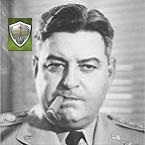Curtis Lemay
Posts: 12969
Joined: 9/17/2004
From: Houston, TX
Status: offline

|
quote:
ORIGINAL: ColinWright
quote:
ORIGINAL: Curtis Lemay
It's an abstraction, and you've just given an extreme case. Clearly, if they started at 100% supply, the one firing ten times would disappear much faster. Regardless, at 1% they're both going to be disappearing fast. Being unsupplied in TOAW is a bitch.
But being at 1% supply lets you keep banging away. As long as your enemy's red-light too, it works just fine.
Not in the case I listed. If the unit is unsupplied, it's going to wither away.
I'm not saying it's perfect. I'm just saying any claim that guns never stop firing or tanks never run out of gas in TOAW is false. There is a specific situation where they do so - when unsupplied. That needs to be extended, though (see below).
quote:
It occurs to me that one solution might be to let infantry and other non-motorized, non-artillery icon units continue as at present -- but all motorized, aircraft, and artillery-icon units could go into 'negative supply.' Their combat values could continue to be calculated as at present -- but any unit in such a state at the start of a turn would automatically enter re-org and stay there until it had regained positive supply.
This wouldn't be ideal, and of course Curtis will continue to stomp around, but it seems to me (a) relatively doable, and (b) a closer approximation of reality than what we currently have.
One thing I really like about this is that it would encourage players to rest up for the 'big push' and/or hold the units intended for the counterattack out of the fray until der Tag. If all your artillery and tanks are at 20-30% supply, sure you can go ahead and attack -- but assuming a few rounds, everything's going to shut down next turn. If you want your Bagration, you'd better let everybody get to green light before you go.
Step one in implementing this would be to give Ralph a lobotomy. As I've pointed out, it actually facilitates offensives continuing indefinitely because it is more harmful to the defense than the offense. The offense would only have to rest their armor and artillery. The defense would have to abandon theirs. Add that there's no direct correlation between the unit's icon and what equipment it actually contains.
Item 5.9 (Over-Extended Supply) in the Wishlist addresses this more realistically. The problem with TOAW is that there is no "tentative" supply condition. You're either "supplied", which is very beneficial, or "unsupplied" which is very deleterious. There's nothing inbetween. This would add a third supply state that would have properties of both. If in this state, you would have a line of communications and would still receive supply and replacements. But you would also suffer attrition similar to being unsupplied (but losses would go to the pools instead of the dead pile). This state would be triggered if the hex had a supply level below the designer set level. (So, if the setting was 10, then any hex with 9 supply or less would be "Over-Extended".
Once in this condition, units would have to slow-down / pause to recover supply sufficiently to keep above the unit supply level that would cause them attrition (or even wait for the full supply net to catch up to them) or find themselves withering away. The defender, in contrast, would be falling back on his full supply net, and would be better able to make a stand.
This would directly address the "infinite" supply line problem. As well as the need to pause after an advance to build up supply.
The other issue here is the lack of any breakdown of supply into its components. One reason the movement reduction for 1% supply is not that great is that the game doesn't keep track of what the supply was expended on. You can get to 1% firing without moving a single hex, or you can get there moving around without firing a shot. The game doesn't really know how you got there.
If we had Component Supply (Wishlist Item 5.14) that could be accounted for. So, supply could be broken down into fuel and ammo. Then moving would use only fuel and fighting would use only ammo. Then there could be justification for making the penalties for being 1% in either more stringent for the associated function. Of course, there could be more breakdown further, but I think those two would be enough for a while. The breakdown wouldn't need to take place until the supply got to the unit (for simplicity purposes).
The other wishlist item I'm hawking is Item 5.6 (Mobile Supply Points). This would crudely facilitate sea supply, and would be a stepping stone to discrete supply / tonnage supply, etc.
|
 Printable Version
Printable Version










 New Messages
New Messages No New Messages
No New Messages Hot Topic w/ New Messages
Hot Topic w/ New Messages Hot Topic w/o New Messages
Hot Topic w/o New Messages Locked w/ New Messages
Locked w/ New Messages Locked w/o New Messages
Locked w/o New Messages Post New Thread
Post New Thread